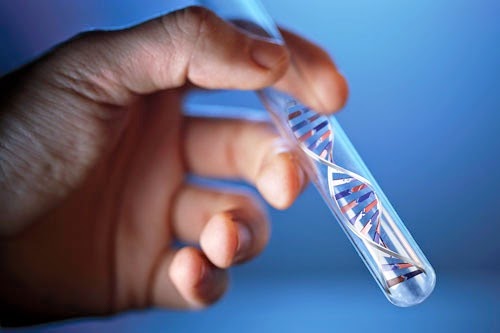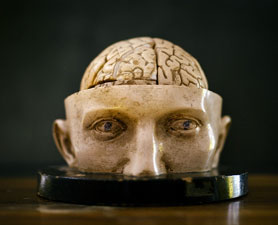Genetics in Modern Medicine – the Future is Now
 The Human Genome Project was founded on the
premise that it would unlock the secrets of disease and lead to new cures for
many disorders. While the new cures have mostly yet to materialise, the secrets of
disease are indeed being revealed, in ways that will transform medicine over
the coming years. Both our knowledge of the genetic causes of disease and our
ability to test for those causes have increased exponentially in recent years.
These advances will place genetic testing at the front line of diagnostics, not
just for the relatively small number of already well-known inherited disorders,
but for an ever-widening array of conditions, both rare and common.
The Human Genome Project was founded on the
premise that it would unlock the secrets of disease and lead to new cures for
many disorders. While the new cures have mostly yet to materialise, the secrets of
disease are indeed being revealed, in ways that will transform medicine over
the coming years. Both our knowledge of the genetic causes of disease and our
ability to test for those causes have increased exponentially in recent years.
These advances will place genetic testing at the front line of diagnostics, not
just for the relatively small number of already well-known inherited disorders,
but for an ever-widening array of conditions, both rare and common.
The lifetime prevalence of rare disorders
in European populations is estimated at 6-8% of the population (National Rare Disease Plan for Ireland, 2014-2018). Over
6,000 distinct genetic disorders are already defined and more are being
discovered at an increasing pace. For many patients with such disorders, their
experience with the health system involves a long and frustrating diagnostic
odyssey. They are typically seen by various specialists for various symptoms, but
the connections between them are not always recognised. A referral for genetic
testing may be made eventually, but usually as a last resort rather than a
first option.
In a growing proportion of such cases, genetic
testing can reveal the underlying cause of the condition, bringing certainty
and insight to the diagnosis. While specific medications may not exist that
target each condition, a genetic diagnosis can often provide useful predictions
of prognosis and treatment responsiveness. This is especially true for the
hundreds of metabolic disorders, which may be treatable by dietary
interventions or supplements.
But even in cases where there are no direct
medical implications, just receiving a specific diagnosis can be highly
beneficial in helping patients and their families cope with the situation. In
addition, many international support groups have arisen relating to specific
disorders, or for rare diseases in general, such as NORD (U.S.), GRDO (Ireland) and Rare Disease UK. These organisations are helping patients, parents and clinicians share information,
compare experiences and improve outcomes. Genetic information can also inform
future reproductive decisions, including possibilities such as pre-implantation genetic screening.
Rare
mutations can cause common disorders
The effects of genetic mutations are not
restricted to what we typically think of as rare disorders, however.
Discoveries over the last several years are illustrating their central role in
much more common disorders, such as epilepsy, autism, schizophrenia, Alzheimer’s
and Parkinson’s disease, many cancers and other conditions. Indeed, many of
those diagnostic categories may in fact be umbrella terms for a multiplicity of rare disorders that manifest with similar symptoms.
For neuropsychiatric conditions, it has
long been known that such disorders are highly heritable, but it had not been
possible to identify causal genes. That has changed, with the development of
new DNA sequencing technologies, yielding insights that overturn our conception
of such disorders. Rather than reflecting a single entity, broad clinical
categories like autism or epilepsy obscure an extreme diversity of underlying
conditions. Each of these conditions may be quite rare but there are so many of
them that manifest in similar ways that collectively they result in highly
prevalent disorders. Genetics now provides the tools to distinguish them.
The causal mutations in patients with these
conditions can disrupt single genes or can delete or duplicate small sections
of chromosomes, affecting multiple genes at once. For very severe cases, the
mutations will often have arisen de novo, in the generation of egg or, more
commonly, sperm cells. But others are inherited, often from parents who are
clinically unaffected, despite carrying the mutation. This highlights the complexity in relating genotypes to
phenotypes – the clinical presentation of such mutations is quite variable and
often depends on other genetic or environmental factors. Nevertheless, in a
patient showing symptoms, the identification of a major mutation can reveal
important information as to the primary cause.
For example, for patients with a diagnosis
of autism – a diagnosis based on symptoms alone – genetic testing for specific
conditions like Fragile X syndrome or Rett syndrome has been in place for some time.
This is now being expanded to include testing for a growing number of
chromosomal disorders or single-gene mutations, which collectively can now
explain ~15% of cases – a huge increase from just a few years ago. This
percentage is growing all the time as causal mutations in new genes are
identified (reaching 20-25% in recent studies). The successes for autism are
likely to be duplicated for other conditions as the number of sequenced patient
genomes increases.
Genome
sequencing now an affordable front-line option
The pace of technological change in this
field is simply staggering. We are moving from a
position of being able to test
a few specific genes implicated in any particular disorder, to one where it
will be cheaper and faster, as well as more informative, to sequence the
patient’s entire genome. It took thousands of researchers over ten years to
sequence the reference Human Genome, at a total cost of about $3,000,000,000.
Today, a human genome can be sequenced for under $2,000, in about a day, maybe
two.
Those sequencing costs and times are still
falling as new technologies are developed and economies of scale brought to
bear. This brings genome sequencing into the cost range of many blood tests,
radiological scans, or other investigative procedures and suggests it may soon
become a front-line test for many patients with idiopathic disease. Indeed, it
may become cheaper for doctors to order a genome sequence than to spend any of
their own time wondering about whether to order it.
But genomic data are only useful if someone
can interpret them, a far greater task than simply checking for the presence of
a mutation in a specific gene. As it happens, each of us carries a couple hundred mutations in our genome that seriously impact on gene function. Most of
these do not cause disease, however, and it is therefore a challenge to
recognise a pathogenic mutation amongst this background burden of mutations we
all carry. That job will be made easier as genetic information becomes
available for more and more patients.
A
national strategy for genetic services
The enormous potential benefits of such
information have been recognised in several countries, most recently in the UK
where the NHS has launched a project to sequence 100,000 genomes, including
those of thousands of patients with diverse disorders. The genetic
heritage of each population is different, however, with some pathogenic
mutations at much higher frequencies in specific populations, as with mutations
causing cystic fibrosis in Ireland. Characterising the genetic heritage of the
Irish population is thus an important goal as a necessary foundation for
clinical genetic testing.
The health and economic benefits of this
genetic revolution will only be realised if there is adequate provision and
funding of genetic testing and genetic counselling services. In Ireland we
currently lag far behind most other developed countries in the provision of
these services, a situation exacerbated by the recent decision to downgrade
what was the National Centre for Medical Genetics at
Our Lady’s Hospital in Crumlin to a department within the hospital. On the contrary, if the health service in Ireland is to keep pace with
international developments and provide the best care for patients, the role of genetics services will have to be greatly expanded in the future.
[This piece was written for "The
Consultant" - the magazine of the Irish Consultants Association and
appears in the Spring 2015 issue. It is reproduced here with their
consent.]




Lovely post
ReplyDelete